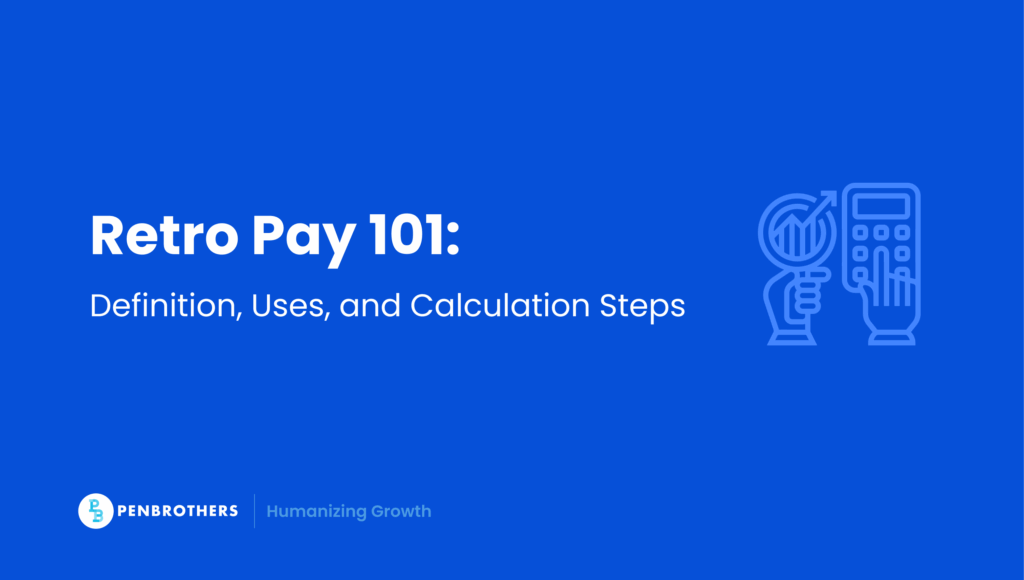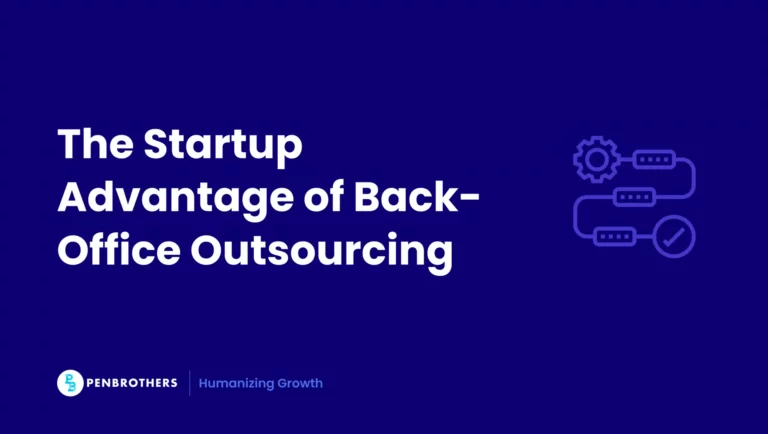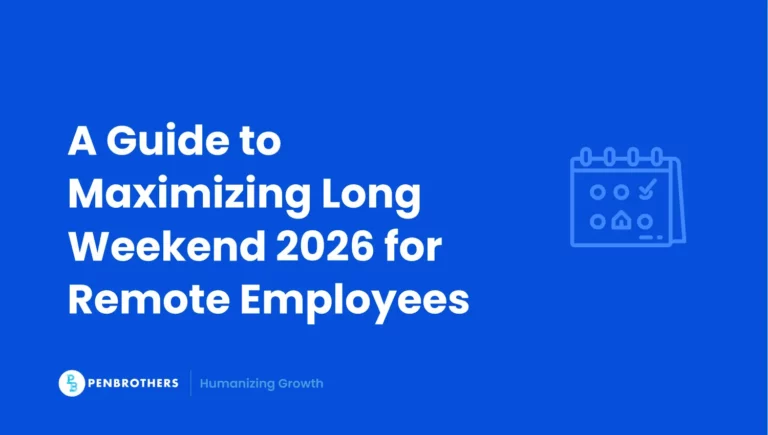Imagine this: an employee receives their paycheck and notices something is off. The raise promised last quarter never appeared, or the overtime from last month was missing. These errors may seem small, but they create distrust and, if left uncorrected, open companies up to compliance risks.
This is where retro pay becomes critical, not only to correct payroll mistakes but also to maintain employee confidence and protect businesses from penalties. According to ADP, one in three employers makes payroll mistakes each year, costing U.S. businesses billions in penalties and corrections (ADP).
What Is Retro Pay?
Retro pay, short for retroactive pay, is additional compensation owed to employees when they were previously paid less than what they rightfully earned. It serves as a payroll correction, ensuring that workers receive the full amount due for past work.
Common scenarios include payroll errors, delayed implementation of salary increases, incorrect overtime rates, or missed allowances. For example, if an employee’s raise was effective in April but payroll only updated it in June, the company must issue retro pay for the difference in April and May.
It’s important to distinguish retro pay from discretionary payments like bonuses. Retro pay is not optional, it is a legal and ethical obligation. Employers are bound by wage and hour laws to correct underpayments promptly. In the U.S., the Fair Labor Standards Act (FLSA) requires accurate compensation for all hours worked (U.S. Department of Labor). Beyond compliance, issuing retro pay also signals fairness and helps maintain employee trust in the payroll process.
When Do Employers Need to Issue Retro Pay?
Common triggers include:
- Missed or delayed raises: Salary increases approved by management but not applied in payroll until later cycles. Retro pay ensures the employee receives the difference for the months they were underpaid.
- Overtime miscalculations: Errors in calculating time-and-a-half or double-time rates. For example, paying overtime at the regular hourly rate instead of the correct premium. Learn more about proper overtime calculations here.
- Unpaid commissions or bonuses: Sales commissions, performance bonuses, or incentive payouts that were earned but not processed in payroll.
- Shift differentials: Employees working night, weekend, or holiday shifts without receiving the correct premium rate.
- Payroll system errors: Mistakes caused by manual data entry, technical glitches, or delayed updates in HR/payroll software.
In all these cases, employers are legally and ethically obligated to correct the shortfall through retro pay. The U.S. Bureau of Labor Statistics (BLS) notes that payroll discrepancies, especially overtime miscalculations are a leading cause of wage disputes (BLS).
Retro Pay vs. Back Pay: Key Differences
Retro pay is often confused with back pay, but the two serve different purposes:
- Retro pay corrects situations where an employee was partially underpaid. The employee did receive wages, but the amount was less than what they should have earned.
- Back pay covers situations where an employee was not paid at all, often tied to legal disputes, missed paychecks, or violations of labor laws.
Example:
- If an employee’s raise was approved in March but payroll only updated the salary in May, the company must issue retro pay for the two months underpaid.
- If an employee worked in March but never received any paycheck for that period, the company owes them back pay.
By distinguishing between the two, employers can better manage compliance risks and communicate clearly with employees about the corrections being made.
How to Calculate Retro Pay (Step-by-Step Guide)
Calculating retro pay requires careful attention to detail to avoid repeating payroll errors. Here’s a practical step-by-step process:
- Identify the error and the affected pay period(s).
- Review payroll records and determine when the underpayment occurred.
- Example: A salary raise took effect in April, but payroll only updated it in June.
- Compare what was paid versus what should have been paid.
- Look at the employee’s correct pay rate or entitlements for that period.
- Example: The employee continued to receive $3,000 monthly instead of the updated $3,200.
- Calculate the difference.
- Subtract the actual amount paid from the correct amount.
- Example: $200 shortfall × 2 months = $400 owed in retro pay.
- Apply payroll deductions and taxes.
- Retro pay is treated as wages, so it must be subject to the same tax withholdings and statutory deductions as regular pay.
- Issue the correction.
- Employers can add the retro pay to the next payroll cycle or issue it as a separate payment. What matters is timeliness and accuracy.
For global and offshore teams, this process can be more complex due to varying tax laws and wage regulations. Using compliant payroll methods is essential, see our guide on how to pay offshore teams.
Retro Pay Examples (Hourly & Salaried Employees)
Hourly Example:
- An employee earns $20/hour and works 10 overtime hours.
- Payroll mistakenly calculates overtime at $25/hour instead of the correct $30/hour.
- Difference owed: $5/hour × 10 hours = $50 in retro pay.
Salaried Example:
- A manager’s salary increases from $60,000 to $65,000 annually starting in March.
- Payroll updates the change in May.
- Difference owed per month: $5,000 ÷ 12 = $416.67.
- Retro pay total for March and April: $416.67 × 2 = $833.34.
These examples highlight how even small payroll delays can create significant adjustments over time.
Is Retro Pay Taxable?
Yes. In the United States and many other jurisdictions, retro pay is classified as supplemental wages. According to IRS guidelines, employers have two main options:
- Flat Rate Method: Withhold at a flat 22% (if paid separately).
- Aggregate Method: Combine the retro pay with the employee’s regular wages and apply standard withholding rates.
The IRS specifies that supplemental wages, including retro pay, are subject to federal income tax withholding and applicable payroll taxes (IRS).
Because retro pay is considered part of gross wages, it also affects net pay after deductions. To better understand how payroll deductions work, see our explainer on net pay.
Legal Considerations and Compliance Risks
Retro pay is not just an administrative adjustment, it carries legal weight. Mishandling underpayments can expose employers to serious compliance issues, including:
- Wage and hour law violations: Failure to issue retro pay correctly can result in penalties, fines, and lawsuits under local labor codes. In the U.S., for instance, the Fair Labor Standards Act (FLSA) requires employers to pay workers accurately for all hours worked.
- Discrimination or retaliation claims: Inconsistent application of retro pay (e.g., correcting errors for some employees but not others) can open the door to legal claims of unfair treatment.
- Breach of contract disputes: If a raise, bonus, or benefit was contractually agreed upon but not delivered, employees may pursue breach of contract claims.
Indeed, according to a 2025 analysis by Watson & Norris, PLLC, wage and hour lawsuits are among the most common employment-related claims in the U.S. The most frequent violations include failure to pay overtime (often tied to misclassification or poor time tracking), unpaid wages, inaccurate payroll calculations, lack of required breaks, and failure to meet minimum wage requirements.
Best Practices for Managing Retro Pay
The good news: most retro pay issues can be avoided or at least resolved smoothly, when companies take a proactive approach. Here are four best practices to follow:
- Communicate openly with employees
- Be transparent about the payroll error, how much is owed, and when it will be corrected. Clear communication builds trust and prevents misunderstandings.
- Act promptly
- Address errors as soon as they are identified. Delays not only frustrate employees but also increase the risk of penalties or compounding interest in some jurisdictions.
- Use payroll automation
- Automated payroll systems can flag inconsistencies and calculate retro pay accurately, minimizing the chance of manual errors.
- Outsource payroll when scaling globally
- For businesses managing offshore or multi-country teams, payroll compliance becomes exponentially more complex. Partnering with an HR or payroll provider helps ensure compliance with local laws, tax rules, and wage regulations across jurisdictions.
Finally, accuracy in payroll starts with understanding the basics. Knowing the difference between gross and net salary is essential for ensuring employees are paid what they are due. Review our guide on gross salary vs. net salary for a clear breakdown.
Final Thoughts
Retro pay is more than a payroll correction, it is a reflection of how much a company values fairness and compliance. Businesses that act quickly and correctly not only avoid legal trouble but also strengthen employee confidence. For growing companies, investing in payroll accuracy and compliance is a long-term advantage.
Employees notice when payroll is handled right. And when mistakes happen, correcting them with transparency can build stronger trust than ignoring them.
Frequently Asked Questions (FAQs)
Yes, if payroll errors result in underpayment, employers are legally required to issue retro pay.
Yes, employers may issue retro pay in the next payroll cycle or as a standalone payment.
Yes. Retro pay counts as part of basic salary, which can affect calculations for benefits like the 13th-month pay.






